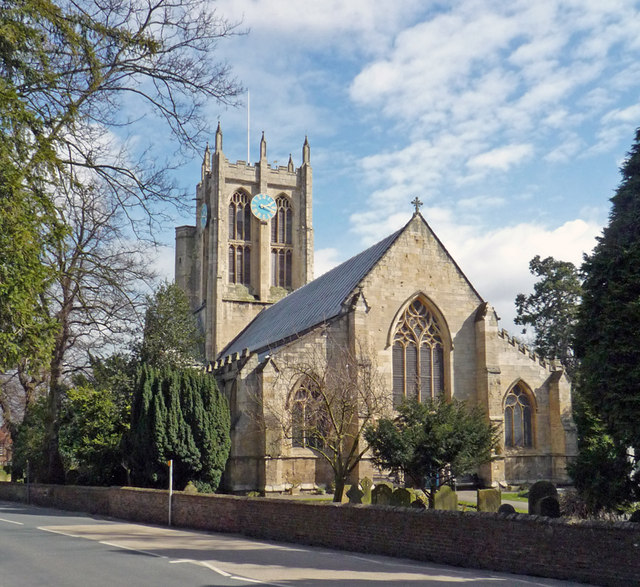I was a researcher for several seasons of the American version of Who Do You Think You Are? It was an absolute blast performing the research, and then very interesting to see how the findings were later used for the filming itself.
The focus of WDYTYA? and other genealogy programs tends to focus on celebrities discovering their past (although some shows now have started to feature segments on “everyday” folks who have interesting ancestors too), although I always thought it would be fun to see some of my ancestors featured in a similar way. So imagine my surprise when I recently was watching through a backlog of British WDYTYA? seasons and saw that my father’s matrilineal ancestors were featured in a 2008 episode with British model Jodie Kidd. She was surprised to discover that she had early New England ancestors, whose descendants eventually returned back to England in her direct line.
At the Rowley, Massachusetts Town Clerk’s office, she discovered that her seventh-great-grandfather Richard Hazen (brother to my ancestor Elizabeth Hazen – my father’s ninth-great-grandmother directly on his matrilineal line, and my tenth-great-grandmother) was the son of Edward Hazen and Hannah Grant in the book Early Settlers of Rowley, Massachusetts. Jodie was told that Edward Hazen’s wife Hannah Grant was an original settler of the town of Rowley with her parents Thomas and Jane (Haburne) Grant, who came to America in 1638 aboard the ship John of London with Rev. Ezekiel Rogers as part of the Great Migration.
Jodie then traveled to St. Peter’s Church in Rowley, East Riding, Yorkshire where Rev. Ezekiel Rogers was rector before he was suspended for his Puritan practices. In response, Rev. Rogers gathered almost thirty Puritan families from the area, including the Grant family, and migrated to New England.

Archivist Lizzy Baker from East Riding Archives then pulled out several original parish record books from the nearby town of Cottingham where the Grant family lived, and revealed the baptism record of Hannah Grant, daughter of Thomas Grant, on 16 October 1631, and the marriage of Hannah’s parents Thomas Grant and Jane Haburne at Cottingham on 21 September 1624.
Jodie was then shown a stained glass window which commemorated the migration of Rev. Roger’s families to Rowley, Massachusetts. She was then shown a silver chalice inscribed “1634”, which Rev. Rogers would have used during services, and Kidd speculated “maybe my ancestors could have drunk from it”, although it is not clear to me that the Grant family would actually have worshiped at Roger’s church in Rowley, since Thomas and Jane Grant had children baptized at Cottingham from 1625/6-1637, then left for America in 1638. More likely, as Puritans they have occasionally heard the controversial Rev. Rogers preach, then answered his call to nearby parishes to migrate to New England. However, they worshipped at St. Mary the Virgin Church in Cottingham, East Riding, Yorkshire.

And while not discussed in the show, Jane Haburne was the daughter of Ralph Haburne and Maud Jecles, who married at Cottingham on 2 December 1593. Therefore, Maud (Jecles/Jeckles/Jekyll) Haburne is my father’s earliest identified matrilineal ancestor. And after taking DNA tests at FamilyTreeDNA and 23andMe, my father discovered that Maud passed her mitochondrial DNA from haplogroup H (called Helena in Bryan Sykes’ Seven Daughters of Eve) on to all of her children, and her daughters and their daughters continued to pass down the same mtDNA throughout the generations.
My father directly inherited his mtDNA haplogroup H from his mother, who inherited it from her mother Sarah Anne “Sally” ANNIS (1908-1980) who m. Edgar Cameron McCLELLAN. She inherited it from her mother (my father’s great-grandmother) Edna Hamson STILES (1877-1957) who m. William Freeland ANNIS.
- And so on down the line, through my father’s Great-Great-Grandmother: Sarah Ann SIBLEY (1840-1900) m. Charles Dean STILES
- Third Great-Grandmother: Tamison HAMSON (1810-1873) m. John Shaw SIBLEY
- Fourth Great-Grandmother: Tamison WAITE (1788-1856) m. William HAMSON
- Fifth Great-Grandmother: Abigail TREFRY (1757-1831) m. Jacob WAITE
- Sixth Great-Grandmother: Elizabeth HALES (1724 – aft. 1760) m. James TREFRY
- Seventh Great-Grandmother: Elizabeth PRITCHETT (1702 – aft. 1746) m. Edward Hales
- Eighth Great-Grandmother: Sarah HARRIS (1681-1729) m. Lt. John Pritchett
- Ninth Great-Grandmother: Elizabeth HAZEN (1651-) m. Nathaniel Harris
- Tenth Great-Grandmother: Hannah GRANT (1631-1716) m. Edward Hazen
- Eleventh Great-Grandmother: Jane HABURNE (1602-1697/8) m. Thomas Grant
- Twelfth Great-Grandmother: Maud JECLES (-1623) m. Ralph Haburne
Perhaps next time we visit my brother-in-law in Yorkshire I will visit the Cottingham church and the East Riding Archives to see if I can identify any additional generations back beyond Maud Jecles to extend the matrilineal line even further. But for now it’s pretty amazing to know that my dad’s mitochondrial DNA was directly inherited from remarkable women Elizabeth (Hazen) Harris, Hannah (Grant) Hazen, Jane (Haburne) Grant and Maud (Jecles) Haburne, all featured directly or indirectly on Who Do You Think You Are?
Watch Jodie Kidd learn about Edward Hazen and Hannah Grant beginning at minute 3:00, learn about Thomas & Jane Grant in New England at minute 6:55 and learn about Thomas & Jane Grant in England at 10:35:

Hi, I stumbled onto your website, and it looks terrific! Edward Hazen and Hannah Grant were also my 10x great grandparents. You seem to be a great researcher – do you have any new insights on Edward and Hannah’s respective ancestries? (They are covered on various websites, but I am not sure how well researched those are). Thanks!